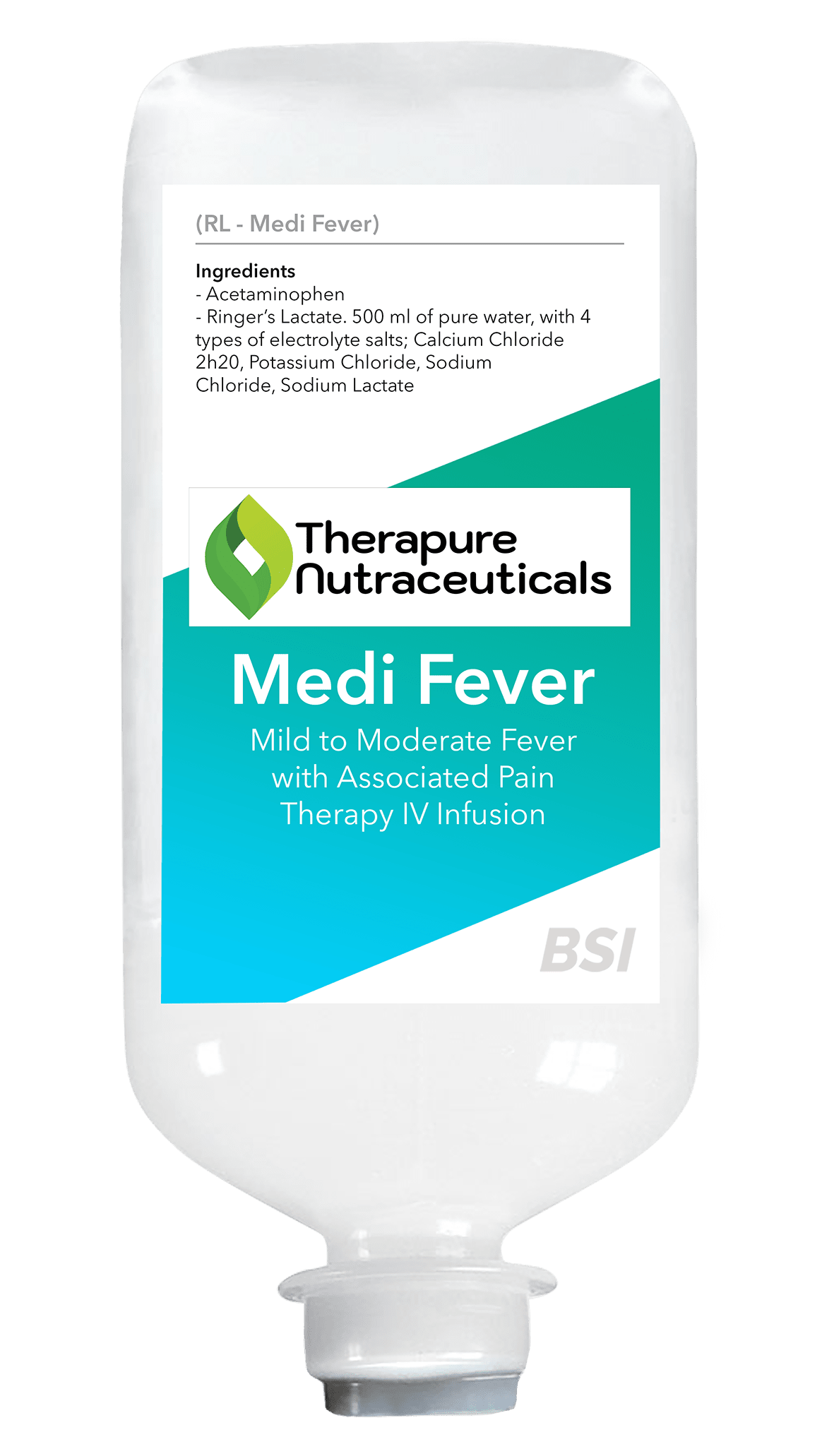
Indications: Paracetamol (acetaminophen) is the most commonly prescribed analgesic for the treatment of acute pain, but only reduces pain by a small amount. More importantly is indicated for the short-term treatment of fever, especially following surgery, and an urgent need to treat weaker pain or greater hyperthermia and / or when the oral route of administration is not advisable.
Symptoms: Mild to moderate pain and / or all grades of fever. Headache, Toothache, Ear Pain, Joint Pain, Periods Pain, Fever and other conditions.
Prescription: Administered via IV Infusion, only after Doctors or Nurse Practitioners have examined the patient and have determined effectiveness and dose.
After the patient is feeling better, may recommend:
Level 2 Analysis and prescription to clear and heal causes of the fever and / or pain.
Actions: Faster acting when given by IV, thus allowing replenishment of electrolytes and in prevention of dehydration or stomach upset.
Cautions: Do not give with Vitamin C, other vitamins, or Vita-IV infusions during the same day. If the patient drinks more than three alcoholic beverages per day, never use more than 2 grams (2000 mg) per day. Causes liver toxicity once above therapeutic levels or from habitual use. Do not use if the patient has severe liver disease.
No other conventional medications should ever be added to paracetamol for IV / infusion use. Rapid IV administration may cause arrhythmias or apnoea. Administer slowly.
Side effects from Paracetamol are rare, but can include: an allergic reaction, which can cause a rash and swelling; flushing, low blood pressure and a fast heartbeat; blood disorders, such as thrombocytopenia (low number of platelet cells) and leukopenia (low number of white blood cells).
Paracetamol, also known as acetaminophen, is an analgesic and antipyretic medication that helps to slightly relieve pain and more so reduce fever. Paracetamol has a general effect on the whole body, by effecting the central nervous system. It helps to reduce fever, and pain, due to a reduction in the production of prostaglandins it causes in the hypothalamus of the brain. These prostaglandins block the “pain messengers” in the central nervous system, which are involved in feedback of fever and pain messages. It also affects the control of serotonergic pathways, which are also involved with carrying body sickness messages to the brain.
WhatsApp us